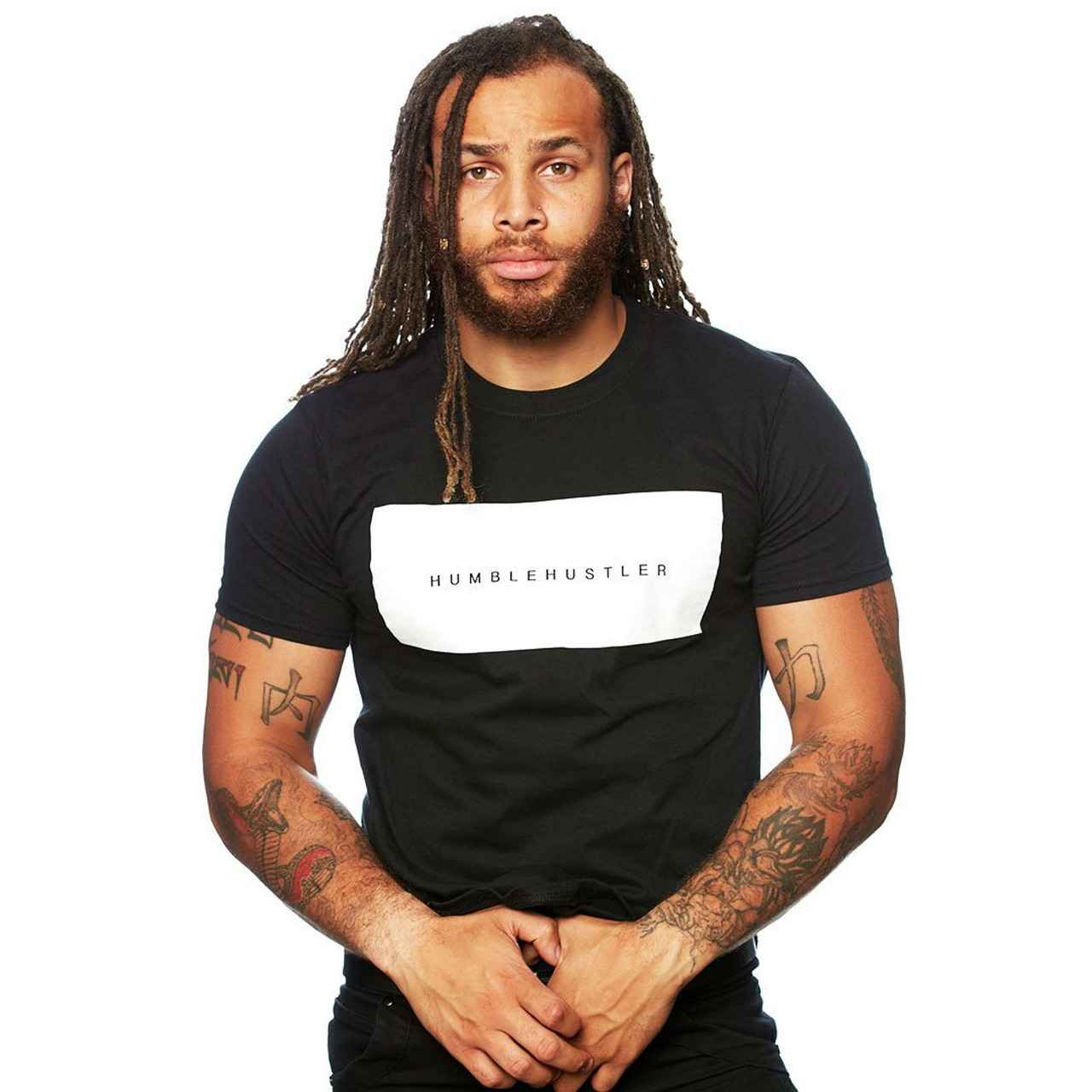This article explores the essential steps and tips for designing custom t-shirts featuring your business logo, ensuring a professional look that resonates with your brand identity.
Understanding the Importance of Custom T-Shirts
Custom t-shirts are not just clothing items; they are powerful marketing tools. They enhance brand visibility and foster unity among employees, creating a cohesive team image. Additionally, they can build a sense of community among customers and fans, making them feel more connected to your brand.
Choosing the Right Fabric for Your T-Shirts
Selecting the appropriate fabric is crucial for both comfort and durability. Consider factors such as breathability, softness, and the intended use of the t-shirts when making your choice.
- Cotton vs. Polyester: Which is Better?
- Benefits of Cotton T-Shirts
- Advantages of Polyester T-Shirts
- Blends: The Best of Both Worlds
Cotton is known for its comfort and breathability, while polyester offers durability and moisture-wicking properties. Understanding the differences can help you make an informed decision for your t-shirts.
Cotton t-shirts are soft, hypoallergenic, and ideal for casual wear. They are also easy to print on, making them a popular choice for custom designs.
Polyester t-shirts are lightweight, resistant to shrinking, and maintain their shape over time. They are perfect for activewear and outdoor events due to their moisture-wicking capabilities.
Fabric blends, such as cotton-polyester, combine the benefits of both materials, offering comfort and durability. These blends are versatile and suitable for a variety of uses.
Designing Your Custom T-Shirt
Creating an eye-catching design is essential for attracting attention. This section covers tips for designing a t-shirt that effectively showcases your business logo.
- Choosing Colors that Represent Your Brand
- Using Design Software for Customization
Color plays a significant role in brand identity. Selecting colors that align with your brand can enhance recognition and evoke specific emotions in your audience.
Utilizing design software can help streamline the process of creating your t-shirt design. Programs like Adobe Illustrator or online tools can assist in crafting professional-looking graphics.
Selecting a Printing Method
Different printing methods yield varying results in quality and cost. Understanding the options available will help you choose the best method for your custom t-shirts.
- Screen Printing vs. Digital Printing
- Heat Transfer Printing Explained
Screen printing is ideal for bulk orders and offers vibrant colors, while digital printing allows for intricate designs with fewer setup costs. Each method has its advantages based on your needs.
Heat transfer printing is a versatile option for small runs or personalized designs. It involves transferring a design onto the fabric using heat and pressure, resulting in high-quality prints.
Finding a Reliable T-Shirt Supplier
Choosing a reputable supplier is vital for ensuring quality and timely delivery. This section outlines key factors to consider when selecting a t-shirt supplier for your business.
- Evaluating Supplier Reviews and Portfolios
- Assessing Pricing and Minimum Order Quantities
Researching supplier reviews and examining their previous work can provide insights into their reliability and the quality of their t-shirts. Look for testimonials from other businesses.
Understanding the pricing structure and minimum order requirements is essential for budgeting. Compare multiple suppliers to find the best balance between quality and cost.
Promoting Your Custom T-Shirts
Once your t-shirts are ready, effective promotion is crucial. This section discusses strategies for marketing your custom t-shirts to maximize their impact.
- Utilizing Social Media for Marketing
- Hosting Events to Showcase Your T-Shirts
Social media platforms provide an excellent avenue for showcasing your custom t-shirts. Engaging visuals and targeted ads can help reach a broader audience and drive sales.
Organizing events or participating in local markets can create buzz around your custom t-shirts. This hands-on approach allows potential customers to see and feel the quality of your products.
Conclusion: Making Your Custom T-Shirt Vision a Reality
Creating custom t-shirts with your business logo involves thoughtful planning and execution. By following these steps, you can develop a product that effectively represents your brand and engages your audience.

Understanding the Importance of Custom T-Shirts
Custom t-shirts are more than just clothing; they are powerful marketing tools that can significantly enhance your brand’s visibility. By incorporating your logo and unique designs, these t-shirts can create a lasting impression on your audience. When employees wear custom t-shirts, it promotes a sense of unity and team spirit, making them feel like part of a cohesive group. This not only boosts morale but also enhances the overall company culture.
Moreover, custom t-shirts can help foster a sense of community among customers and fans. When customers wear branded apparel, they become walking advertisements, showcasing their loyalty to your brand. This can lead to increased brand awareness and can even spark conversations about your products or services. The more people see your brand represented in everyday settings, the more likely they are to recognize and trust it.
Additionally, custom t-shirts can be utilized in various marketing strategies, such as giveaways, promotions, or events. By offering these shirts as incentives, you not only reward your loyal customers but also encourage them to promote your brand within their networks. This word-of-mouth marketing can be incredibly effective in reaching new audiences.
In summary, investing in custom t-shirts is a strategic move that can enhance your marketing efforts. They serve as a means of promoting brand visibility, fostering employee unity, and building a community among your customers. By effectively utilizing custom t-shirts, you can create a lasting impact on your audience and strengthen your brand identity.

Choosing the Right Fabric for Your T-Shirts
Selecting the appropriate fabric for your custom t-shirts is crucial for ensuring both comfort and durability. The right fabric not only impacts the feel of the shirt but also its performance in various situations. When making your choice, consider the following factors:
- Breathability: Fabrics that allow air to circulate help keep the wearer cool and comfortable, especially in warm weather. Look for materials like cotton or moisture-wicking blends.
- Softness: The tactile experience of the fabric can significantly affect customer satisfaction. Soft fabrics are generally preferred for casual wear, making them a popular choice for t-shirts.
- Intended Use: Think about how the t-shirts will be used. For instance, activewear requires different properties than casual or promotional shirts. Choose a fabric that aligns with its purpose.
Cotton is a classic choice known for its comfort and breathability. It is soft against the skin and hypoallergenic, making it suitable for a wide audience. On the other hand, polyester is recognized for its durability and moisture-wicking properties, ideal for those who lead an active lifestyle.
For a balanced approach, consider fabric blends. Cotton-polyester blends combine the breathability of cotton with the durability of polyester, offering a versatile option that caters to various needs.
Ultimately, the fabric you choose will reflect your brand’s identity and values. By selecting the right materials, you can create custom t-shirts that not only look great but also provide a comfortable experience for the wearer.
Cotton vs. Polyester: Which is Better?
When it comes to selecting the ideal fabric for custom t-shirts, understanding the differences between cotton and polyester is essential. Each fabric offers unique properties that cater to various needs and preferences.
| Fabric Type | Comfort | Durability | Moisture-Wicking | Breathability |
|---|---|---|---|---|
| Cotton | High | Moderate | No | Excellent |
| Polyester | Moderate | High | Yes | Good |
Cotton is celebrated for its comfort and breathability. It feels soft against the skin, making it an excellent choice for casual wear and everyday use. Additionally, cotton is hypoallergenic, which means it is less likely to cause skin irritation, making it suitable for individuals with sensitive skin. However, cotton does have its drawbacks; it tends to absorb moisture, which can leave the wearer feeling damp during physical activities.
On the other hand, polyester is known for its durability and moisture-wicking properties. This fabric is designed to pull sweat away from the body, keeping the wearer dry and comfortable during exercise or hot weather. Polyester t-shirts are also less prone to shrinking and wrinkling, making them a practical choice for those who prefer low-maintenance clothing. However, some may find polyester less comfortable than cotton due to its synthetic nature.
Ultimately, the choice between cotton and polyester depends on your specific needs. If you prioritize comfort and breathability, cotton may be the better option. Conversely, if you seek durability and moisture management, polyester could be the ideal fabric for your custom t-shirts.
In conclusion, understanding the properties of cotton and polyester will empower you to make an informed decision when selecting fabrics for your custom t-shirts. Consider your target audience and the intended use of the shirts to choose the right material that aligns with your brand’s vision.
Benefits of Cotton T-Shirts
Cotton t-shirts have become a staple in casual fashion, and their popularity is no accident. They offer a myriad of benefits that make them an ideal choice for everyday wear. Below are some key advantages that highlight why cotton t-shirts are favored by many.
- Softness and Comfort: One of the most appealing qualities of cotton is its soft texture. Cotton t-shirts feel gentle against the skin, making them perfect for all-day wear.
- Hypoallergenic Properties: Cotton is naturally hypoallergenic, which means it is less likely to cause skin irritations or allergic reactions. This makes it a great option for those with sensitive skin.
- Breathability: Cotton fibers allow for air circulation, helping to keep the body cool in warm weather. This breathability makes cotton t-shirts suitable for various activities, from casual outings to exercising.
- Easy to Print On: Cotton’s smooth surface makes it an excellent canvas for custom designs. Whether for promotional purposes or personal expression, printing on cotton t-shirts yields vibrant and long-lasting results.
- Durability: With proper care, cotton t-shirts can withstand multiple washes without losing their shape or color. This durability ensures that they remain a wardrobe staple for years to come.
- Eco-Friendly: Being a natural fiber, cotton is biodegradable and can be grown using sustainable practices, making it a more environmentally friendly choice compared to synthetic fabrics.
In conclusion, cotton t-shirts provide an array of benefits that cater to comfort, style, and sustainability. Their versatility and ease of customization further enhance their appeal, making them a perfect choice for anyone looking to combine fashion with functionality.
Advantages of Polyester T-Shirts
Polyester t-shirts have gained immense popularity in the world of fashion and activewear, and for good reason. These shirts are not only functional but also stylish, making them a staple in many wardrobes. Below are some of the key benefits that polyester t-shirts offer:
- Lightweight and Comfortable: Polyester is a lightweight fabric, which makes these t-shirts incredibly comfortable to wear. They are ideal for both casual outings and rigorous activities.
- Moisture-Wicking Properties: One of the standout features of polyester is its ability to wick moisture away from the body. This means that during workouts or hot weather, polyester t-shirts help keep you dry and comfortable.
- Durability: Polyester is known for its strength and resilience. Unlike cotton, which can wear out or fade over time, polyester t-shirts maintain their shape and color even after multiple washes.
- Resistant to Shrinking and Stretching: Polyester t-shirts do not shrink in the wash or stretch out of shape, ensuring they fit well for a long time.
- Quick Drying: The quick-drying nature of polyester makes it an excellent choice for outdoor activities, as it allows you to stay comfortable without the discomfort of damp fabric.
- Easy to Care For: These t-shirts are generally machine washable and require less maintenance compared to other fabrics, making them a practical choice for everyday wear.
In conclusion, polyester t-shirts are a fantastic option for anyone looking for a combination of style, comfort, and functionality. Whether you are engaging in sports, attending outdoor events, or simply lounging at home, polyester t-shirts provide the perfect blend of performance and fashion.
Blends: The Best of Both Worlds
When it comes to choosing the perfect fabric for custom t-shirts, fabric blends like cotton-polyester stand out as an excellent choice. These blends combine the unique qualities of both cotton and polyester, resulting in garments that are not only comfortable but also highly durable. This section will delve into the numerous advantages of using fabric blends, making them a preferred option for various applications.
Comfort Meets Durability
Cotton is renowned for its softness and breathability, making it a favorite for casual wear. On the other hand, polyester is celebrated for its strength and moisture-wicking properties. By blending these two materials, manufacturers create a fabric that maintains the comfort of cotton while enhancing the durability and performance of polyester. This combination is particularly beneficial for custom t-shirts that are intended for both casual and active use.
Versatility for Various Uses
Fabric blends are incredibly versatile, making them suitable for a wide range of applications. Whether you’re designing t-shirts for a corporate event, a sports team, or promotional giveaways, cotton-polyester blends can meet your needs. They can easily adapt to different printing techniques, ensuring that your custom designs stand out while retaining their quality over time.
Cost-Effectiveness
Another advantage of choosing fabric blends is their cost-effectiveness. Blended fabrics are often less expensive than 100% cotton or polyester options, making them a budget-friendly choice for businesses looking to order in bulk. Additionally, their durability means they are less likely to wear out quickly, providing better value for your investment.
Conclusion
In summary, fabric blends like cotton-polyester offer the best of both worlds. They provide the comfort of natural fibers along with the durability required for everyday wear. This makes them an ideal choice for custom t-shirts, ensuring that your designs not only look great but also last.

Designing Your Custom T-Shirt
Creating an eye-catching design is essential for attracting attention and making a lasting impression. A well-designed t-shirt not only showcases your business logo but also embodies your brand’s identity and values. Below are some key tips to help you design a t-shirt that effectively showcases your business logo.
- Keep It Simple: A cluttered design can overwhelm viewers. Aim for a clean and simple look that highlights your logo prominently. Remember, less is often more.
- Focus on the Logo: Your logo should be the focal point of the design. Ensure it’s clearly visible and not overshadowed by other elements. Position it strategically on the shirt for maximum visibility.
- Choose Complementary Colors: Select colors that complement your logo and resonate with your brand. Use color theory to evoke the right emotions and create a visual harmony that attracts attention.
- Consider Typography: If your design includes text, choose fonts that are legible and align with your brand’s personality. The font should be easy to read from a distance, especially if the t-shirt is worn in public.
- Utilize Quality Graphics: High-resolution graphics ensure that your design looks professional. Avoid pixelated images, as they can detract from the overall quality of your t-shirt.
- Incorporate Unique Elements: Adding unique design elements, such as patterns or graphics that reflect your brand’s mission, can make your t-shirt stand out. Think about what sets your business apart and incorporate that into the design.
Finally, test your design by creating a mock-up. This allows you to see how the elements come together and make adjustments as needed. By following these tips, you can create a stunning t-shirt design that not only attracts attention but also effectively showcases your business logo.
Choosing Colors that Represent Your Brand
is a crucial aspect of establishing a strong brand identity. The right colors not only enhance brand recognition but also evoke specific emotions and associations in your audience. In this section, we will explore how to select colors that resonate with your brand values and effectively communicate your message.
Colors can significantly influence consumer behavior. For instance, blue often conveys trust and reliability, making it a popular choice for financial institutions. In contrast, red can evoke feelings of excitement and urgency, which is why it is frequently used in sales promotions. Understanding the psychology of colors is essential for aligning your brand with the desired emotional response from your audience.
- Research Your Target Audience: Knowing your audience’s preferences can guide your color choices. Conduct surveys or analyze market trends to identify colors that appeal to your demographic.
- Analyze Competitors: Observe the color schemes used by competitors in your industry. This can help you differentiate your brand while also ensuring you remain relevant.
- Consider Cultural Associations: Colors can have different meanings in various cultures. Be mindful of these associations, especially if your brand operates in multiple regions.
Once you have gathered insights, create a color palette that reflects your brand’s personality. Aim for a combination of primary and secondary colors that work well together. A well-defined palette not only enhances aesthetic appeal but also ensures consistency across all brand materials.
In conclusion, choosing the right colors for your brand is not merely an aesthetic decision; it is a strategic one that can influence perceptions and drive engagement. By carefully considering your audience, competition, and cultural context, you can create a color scheme that effectively represents your brand and resonates with your target market.
Using Design Software for Customization
When it comes to creating custom t-shirt designs, leveraging design software can significantly enhance the process. Programs such as Adobe Illustrator, CorelDRAW, and various online tools offer a plethora of features that streamline your design workflow, enabling you to produce professional-looking graphics with ease.
One of the primary advantages of utilizing design software is the ability to create vector graphics. Unlike raster images, vector graphics can be resized without losing quality, making them ideal for printing on t-shirts. This ensures that your business logo or design remains sharp and clear, regardless of the size of the print.
Moreover, many design software options come equipped with built-in templates and design elements. These resources can help you kickstart your creative process, allowing you to focus on customizing the design to reflect your brand identity. For instance, you can easily experiment with different color palettes, fonts, and layouts to find the perfect combination that resonates with your target audience.
In addition to graphics creation, design software often includes features for collaboration and sharing. This is particularly useful if you are working with a team or seeking feedback from stakeholders. You can easily share your designs via cloud services or export them in various formats suitable for different printing methods.
Furthermore, many online design tools are user-friendly and do not require extensive graphic design experience. Platforms like Canva and Placeit allow users to create stunning designs through intuitive drag-and-drop interfaces, making it accessible for anyone to bring their t-shirt ideas to life.
In conclusion, utilizing design software not only streamlines the t-shirt design process but also empowers you to create high-quality, visually appealing products that effectively showcase your business logo. Investing time in learning these tools can yield significant returns in the form of enhanced brand visibility and customer engagement.

Selecting a Printing Method
When it comes to creating custom t-shirts, the printing method you choose can significantly impact both the quality of the final product and the cost involved. Understanding the various options available is crucial for making an informed decision that aligns with your business needs. Below, we explore the most popular printing methods, their advantages, and considerations to help you select the best option for your custom t-shirts.
- Screen Printing: This traditional method is renowned for its ability to produce vibrant colors and durable prints. It is particularly cost-effective for large orders, making it a preferred choice for bulk production. However, the setup costs can be high, and it may not be suitable for designs with intricate details or a wide range of colors.
- Digital Printing: Also known as Direct-to-Garment (DTG) printing, this method allows for detailed designs with a full spectrum of colors. It is ideal for smaller runs or one-off designs, as it requires minimal setup. While the per-unit cost is higher than screen printing, the flexibility and quality make it a strong contender for custom t-shirts.
- Heat Transfer Printing: This versatile method involves printing a design onto a special transfer paper and then applying it to the fabric using heat. It is excellent for small orders or personalized items. However, the durability may not match that of screen printing, and the colors may fade over time if not cared for properly.
- Sublimation Printing: Best suited for polyester fabrics, sublimation printing embeds the ink into the fabric, resulting in vibrant and long-lasting designs. This method is ideal for all-over prints but is limited to light-colored materials.
In conclusion, each printing method offers unique advantages and drawbacks. By understanding these options, you can select the most appropriate method for your custom t-shirts, ensuring your designs are both visually appealing and cost-effective. Always consider the scale of your order, the complexity of your design, and your budget when making your choice.
Screen Printing vs. Digital Printing
When it comes to creating custom t-shirts, choosing the right printing method is crucial for achieving the desired results. Two of the most popular techniques are screen printing and digital printing. Each method has its own unique advantages and is suited for different applications.
| Feature | Screen Printing | Digital Printing |
|---|---|---|
| Best for | Bulk Orders | Small Runs and Intricate Designs |
| Color Vibrancy | High | Moderate |
| Setup Cost | Higher (due to screens) | Lower (no screens required) |
| Design Complexity | Simple Designs | Complex and Detailed Designs |
| Turnaround Time | Longer (especially for large orders) | Faster (ideal for quick orders) |
Screen printing is often the go-to method for businesses looking to produce large quantities of t-shirts. This technique involves creating a stencil (or screen) for each color in the design, allowing for vibrant and durable prints. The result is a bold, eye-catching finish that holds up well over time. However, the setup process can be time-consuming and costly, making it less ideal for smaller orders.
On the other hand, digital printing utilizes advanced technology to print designs directly onto the fabric. This method is perfect for intricate designs, as it allows for a wide range of colors and details without the need for multiple screens. Additionally, the lower setup costs make it a more economical choice for smaller runs, allowing businesses to experiment with different designs without a significant financial commitment.
Ultimately, the choice between screen printing and digital printing depends on your specific needs. If you are looking for vibrant colors and are planning a large order, screen printing might be the way to go. However, if you require flexibility and intricate designs with lower setup costs, digital printing is an excellent option.
Heat Transfer Printing Explained
Heat transfer printing is a versatile and innovative technique that has gained popularity for its ability to produce high-quality prints on various fabrics. This method is particularly advantageous for small runs or personalized designs, making it an excellent choice for businesses and individuals looking to create custom apparel.
The process of heat transfer printing involves transferring a design onto fabric using heat and pressure. This is achieved by printing the desired image onto a special transfer paper, which is then placed on the fabric. When heat is applied, the design adheres to the material, resulting in vibrant and durable prints. This method is not only efficient but also allows for intricate designs that can capture the essence of your brand or personal style.
- Cost-Effective for Small Orders: Unlike traditional screen printing, which often requires a minimum order quantity, heat transfer printing is ideal for smaller batches. This makes it perfect for businesses that want to test new designs or for individuals looking to create one-of-a-kind pieces.
- Wide Range of Applications: Heat transfer printing can be used on various materials, including cotton, polyester, and blends. This versatility allows for a broader range of products, from t-shirts to bags and even home textiles.
- Quick Turnaround Time: The process is relatively fast, enabling businesses to fulfill orders promptly. This is especially beneficial for those needing items for events or promotions.
Furthermore, heat transfer printing offers the flexibility to use different types of transfer materials, such as vinyl and sublimation transfers. Each type has its unique advantages, allowing for customization based on the specific needs of the project.
In conclusion, heat transfer printing stands out as a high-quality printing method that combines efficiency and versatility. Whether you’re a small business owner or an individual looking to express your creativity, this printing technique can help you achieve stunning results with your custom designs.

Finding a Reliable T-Shirt Supplier
is essential for the success of your custom t-shirt business. The quality of the shirts and the reliability of delivery can significantly impact your brand’s reputation. Below are key factors to consider during your selection process:
- Reputation and Experience: Look for suppliers with a proven track record. A well-established supplier is likely to have the experience necessary to meet your quality expectations.
- Product Quality: Request samples to evaluate the fabric quality, print clarity, and overall construction of the t-shirts. High-quality products will reflect positively on your brand.
- Production Capabilities: Ensure the supplier can handle your order size, whether it’s a small batch or a large bulk order. Their production capacity should align with your business needs.
- Timely Delivery: Inquire about their average turnaround times and their ability to meet deadlines. A reliable supplier should be able to provide you with a clear timeline for order fulfillment.
- Customer Service: Good communication is key. Choose a supplier who is responsive and willing to address your concerns promptly. This can prevent misunderstandings and ensure a smoother process.
- Pricing Structure: While cost is important, it shouldn’t be the only factor. Compare pricing against the quality of products offered. Sometimes, paying a little extra can ensure better quality and service.
- Reviews and Testimonials: Read reviews and seek testimonials from other businesses to gauge their experiences. Positive feedback can provide reassurance about the supplier’s reliability.
- Flexibility: A good supplier should be adaptable to changes in order quantities or design modifications. This flexibility can be crucial as your business evolves.
By considering these factors, you can make an informed decision when selecting a t-shirt supplier, ensuring that your custom apparel meets both your quality standards and delivery expectations.
Evaluating Supplier Reviews and Portfolios
When it comes to creating custom t-shirts for your business, selecting the right supplier can significantly impact the quality of your final product. One of the most effective ways to gauge a supplier’s reliability and the quality of their t-shirts is by researching supplier reviews and examining their previous work. This process not only helps you make an informed decision but also ensures that you invest in a supplier who aligns with your brand’s values.
- Read Customer Testimonials: Look for reviews from other businesses that have previously worked with the supplier. Positive testimonials can provide insights into the supplier’s reliability, communication, and overall service quality.
- Check Online Ratings: Websites like Trustpilot, Google Reviews, and social media platforms often feature customer feedback. Pay attention to both positive and negative reviews to get a balanced view.
- Examine Portfolios: A reputable supplier should have a portfolio showcasing their previous work. Review the quality of their t-shirts, the variety of designs, and the printing techniques used. This will give you a clear idea of what to expect.
- Request Samples: If possible, ask for samples of their t-shirts. This allows you to evaluate the fabric quality, print clarity, and overall feel of the product before making a bulk order.
- Consider Industry Experience: Suppliers with experience in your industry may better understand your specific needs and preferences. Look for those who have worked with similar brands or products.
By taking the time to thoroughly evaluate supplier reviews and portfolios, you can make a well-informed decision that enhances the quality of your custom t-shirts. This careful selection process will ultimately contribute to your brand’s success and recognition in the market.
Assessing Pricing and Minimum Order Quantities
When embarking on the journey to create custom t-shirts for your business, understanding the pricing structure and minimum order requirements is crucial for effective budgeting and financial planning. This knowledge not only aids in managing costs but also helps in making informed decisions that align with your business goals.
Many suppliers have different pricing models that can vary based on factors such as the type of fabric, printing method, and the complexity of the design. It is essential to compare multiple suppliers to find the best balance between quality and cost. Here are some key considerations to keep in mind:
- Volume Discounts: Some suppliers offer discounts for larger orders, which can significantly reduce the cost per unit. Understanding the minimum order quantity (MOQ) can help you determine if it’s feasible to meet these requirements.
- Hidden Costs: Be aware of any additional fees that may not be immediately apparent, such as setup fees, shipping costs, or charges for special requests. These can add up quickly and affect your overall budget.
- Quality Assurance: While it may be tempting to choose the cheapest option, consider the quality of the materials and printing. A lower price might lead to inferior products that could harm your brand’s reputation.
- Supplier Reliability: Research potential suppliers’ delivery times and reliability. A supplier that cannot deliver on time, regardless of pricing, can disrupt your marketing efforts.
In conclusion, taking the time to thoroughly assess pricing structures and minimum order quantities will empower you to make strategic decisions that enhance your brand’s visibility while keeping costs manageable. By comparing suppliers and understanding their offerings, you can ensure that you achieve the best possible outcome for your custom t-shirts.

Promoting Your Custom T-Shirts
Once your custom t-shirts are ready, effective promotion is crucial to ensure they reach your target audience and achieve maximum impact. This section outlines various strategies to market your custom t-shirts effectively.
- Leverage Social Media Platforms: Social media is a powerhouse for marketing. Utilize platforms such as Instagram, Facebook, and Pinterest to showcase your t-shirts. Share high-quality images, engage with followers, and use relevant hashtags to increase visibility. Consider running targeted ads to reach a specific demographic.
- Influencer Collaborations: Partnering with influencers who align with your brand can significantly boost your reach. Influencers can showcase your t-shirts to their followers, providing authentic exposure and credibility.
- Content Marketing: Create engaging content that resonates with your audience. Blog posts, videos, or tutorials that feature your t-shirts can attract potential customers. Share stories about the design process or the inspiration behind your brand to create a deeper connection.
- Host Giveaways and Contests: Organizing giveaways or contests can create excitement around your t-shirts. Encourage participants to share your posts, tag friends, or use a specific hashtag to increase engagement and visibility.
- Participate in Local Events: Attend local markets, fairs, or community events to showcase your t-shirts. This hands-on approach allows potential customers to see and feel the quality of your products, making them more likely to purchase.
- Email Marketing Campaigns: Build an email list and send out newsletters featuring your custom t-shirts. Include exclusive offers, styling tips, and updates about new designs to keep your audience engaged.
In conclusion, promoting your custom t-shirts effectively requires a blend of creativity and strategic planning. By utilizing social media, collaborating with influencers, and engaging with your community, you can maximize the impact of your marketing efforts and drive sales.
Utilizing Social Media for Marketing
In today’s digital age, social media platforms have emerged as a powerful tool for businesses looking to promote their custom t-shirts. With billions of active users, these platforms offer an unparalleled opportunity to showcase your products and engage with potential customers.
Visual Appeal is Key
One of the most effective ways to attract attention on social media is through engaging visuals. High-quality images of your custom t-shirts can create an immediate impact. Consider using lifestyle photography that shows people wearing your shirts in real-life scenarios. This not only highlights the design but also helps customers envision themselves wearing them.
Targeted Advertising for Maximum Reach
Utilizing targeted ads on platforms like Facebook and Instagram allows you to reach a broader audience. These ads can be tailored to specific demographics, interests, and behaviors, ensuring that your products are seen by those most likely to purchase. By analyzing engagement metrics, you can refine your strategy over time to enhance effectiveness.
Engagement and Community Building
Social media is not just about promotion; it’s also about building a community. Engage with your audience by responding to comments, sharing user-generated content, and hosting giveaways or contests. This interaction fosters a sense of loyalty and encourages customers to spread the word about your brand.
Utilizing Hashtags and Trends
Incorporating relevant hashtags can significantly increase the visibility of your posts. Stay updated on trending topics and challenges within your niche to capitalize on the increased traffic. This strategy can help your custom t-shirts gain traction and attract new followers.
Conclusion
In summary, leveraging social media for marketing your custom t-shirts involves creating visually appealing content, utilizing targeted advertising, engaging with your audience, and staying current with trends. By implementing these strategies, you can effectively enhance your brand’s visibility and drive sales.
Hosting Events to Showcase Your T-Shirts
Participating in local markets or organizing your own events can significantly enhance the visibility of your custom t-shirts. This approach not only creates excitement but also provides a unique opportunity for potential customers to interact directly with your brand.
When you set up a booth at a local market or community event, you are offering people a chance to experience your products firsthand. Customers can see, touch, and try on your t-shirts, allowing them to appreciate the quality and design in a way that online shopping cannot replicate. This tactile experience is crucial for building trust and making a lasting impression.
Moreover, events create a buzz around your brand. By engaging with the community, you can foster relationships and encourage word-of-mouth marketing. Consider offering special promotions or exclusive designs at these events to attract more visitors to your booth. For instance, a limited-time discount or a buy-one-get-one-free offer can incentivize purchases and increase foot traffic.
Additionally, hosting your own events, such as a launch party or a themed gathering, allows you to control the atmosphere and message. You can create an experience that aligns with your brand identity, making it memorable for attendees. Incorporate elements like music, refreshments, or interactive activities to enhance the overall experience.
Utilizing social media to promote these events is also essential. Share engaging content leading up to the event, such as sneak peeks of your t-shirts or behind-the-scenes preparations. Encourage attendees to post about their experience using a specific hashtag, which can further amplify your reach.
In conclusion, hosting events and participating in local markets are effective strategies for showcasing your custom t-shirts. These hands-on experiences not only allow customers to appreciate the quality of your products but also help build a community around your brand.

Conclusion: Making Your Custom T-Shirt Vision a Reality
Creating custom t-shirts with your business logo requires a blend of creativity, strategy, and attention to detail. By following a systematic approach, you can produce a product that not only showcases your brand effectively but also resonates with your target audience.
To begin with, it is essential to define your brand identity. Understanding the values and message you want to convey through your custom t-shirts will guide your design decisions. Consider what emotions you want your audience to feel when they see your logo on a shirt.
Next, selecting the right fabric is crucial. The choice of material impacts not only the look but also the comfort and durability of the t-shirts. Cotton is popular for its softness and breathability, while polyester is favored for its durability and moisture-wicking properties. A blend of both can offer the best of both worlds, making it suitable for various occasions.
Designing your t-shirt is where your creativity shines. Use design software to create a visually appealing graphic that incorporates your logo. Pay attention to color schemes that reflect your brand’s identity. Colors can evoke emotions and play a pivotal role in how your brand is perceived.
When it comes to printing methods, you have several options, including screen printing, digital printing, and heat transfer. Each method has its own set of advantages, so consider your budget and the intricacy of your design when making a choice.
Finding a reliable supplier is another critical step. Look for suppliers with positive reviews and a strong portfolio. Assess their pricing structures and minimum order requirements to ensure they align with your business needs.
Once your t-shirts are ready, promoting them effectively is essential. Utilize social media platforms to showcase your designs and engage with your audience. Hosting events can also provide a hands-on experience, allowing customers to appreciate the quality of your products.
In conclusion, making your custom t-shirt vision a reality involves careful planning and execution. By following these guidelines, you can create a product that not only represents your brand but also connects with your audience on a deeper level.
Frequently Asked Questions
- What types of fabric are best for custom t-shirts?
The best fabrics for custom t-shirts are typically cotton, polyester, or blends of both. Cotton is soft and breathable, making it great for casual wear, while polyester is durable and moisture-wicking, ideal for active use. Blends offer a balance of comfort and durability.
- How can I design an eye-catching t-shirt?
To create an eye-catching t-shirt, focus on colors that resonate with your brand, and use design software to craft professional graphics. Keep your design simple yet impactful, ensuring it effectively showcases your business logo.
- What printing method should I choose for my t-shirts?
The choice of printing method depends on your needs. Screen printing is excellent for bulk orders with vibrant colors, while digital printing is better for intricate designs with lower setup costs. Heat transfer printing is versatile for smaller runs.
- How do I find a reliable t-shirt supplier?
To find a reliable supplier, research reviews and portfolios to gauge their quality. Look for testimonials from other businesses and compare pricing and minimum order quantities to ensure you get the best value.
- What are effective ways to promote my custom t-shirts?
Utilizing social media platforms is a fantastic way to market your custom t-shirts. Engaging visuals and targeted ads can help you reach a broader audience. Additionally, hosting events or participating in local markets can create buzz and allow customers to experience your products firsthand.












